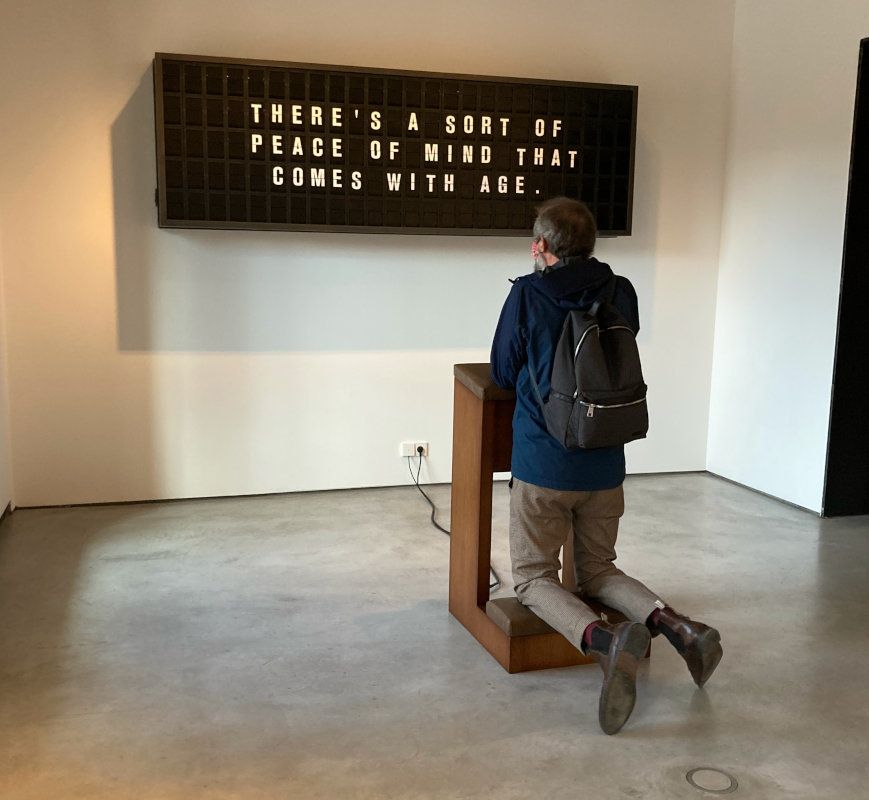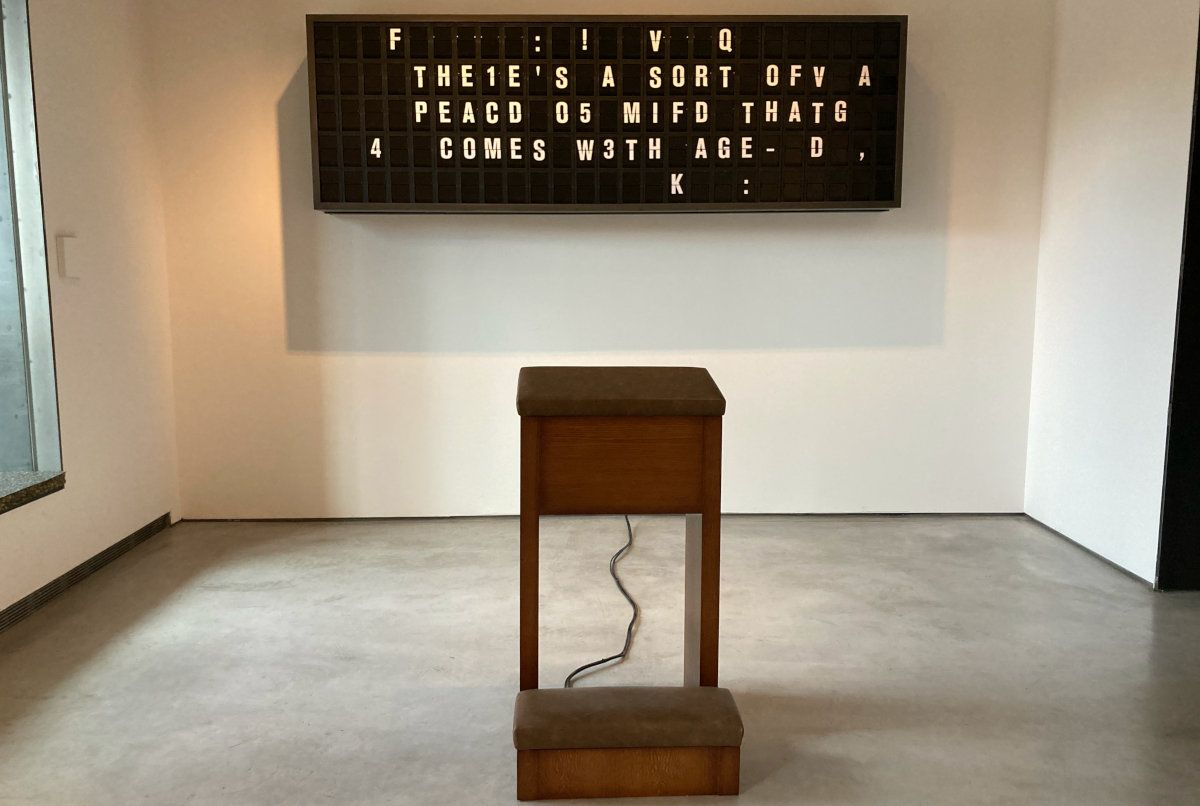On Mario Klingemann's Appropriate Response
Appropriate Response by Quasimondo / Mario Klingemann helps us reflect on how we interact with our everyday algorithms and how important it is to make them compatible with our emotional beings.

Last week Iskra Velitchkova and I visited the fabulous space that the Colección Solo has in Madrid. A magnificent collection of contemporary art that tries to keep an eye on what truly is the forefront of artistic expression today, including several forms of digital art / media. I was delighted to see that they include works drawn from current pop culture (short video loops, animated gifs, videogames, etc.), not leaving painting, sculpture and other artistic domains aside. The curation poured into this collection is something to be thankful for.
I don't mean to write a full review of the visit, but rather focus on one piece, what it felt like to experience it and the reflections thereafter: Appropiate response by Quasimondo / Mario Klingemann. In essence, there is a text generation algorithm (a GPT-2 model, to be precise), trained by the artist to provide each visitor with a sentence. It was the setup what moved me most: the visitor kneels down as if to pray, looking at a mechanical display board, where the sentence will form. After you kneel down, you wait a bit and the board will flip all its cards to reveal your very own sentence. After a while, the sentence starts to degrade, card by card, slowly progressing towards random letters, symbols and empty spaces.

We are used to interacting with all sorts of algorithms in our everydays; I will spare you the list of things you do when that happens since it's not the point of this text, but most digital services you use include these interactions nowadays. This installation, however, felt very strong and sparked several thoughts and impressions (thanks art and thanks artists!). First, all the physical elements which usually are not present in our interactions with the digital. Kneeling down is very powerful and puts one in a position of naturally viewing whatever comes to us in a special light. It frames whichever response that the installation gives us as an important thing, predisposing our mind to accept that there is some hidden truth in there. Having to wait for the message to come helps us process what is going on, and is more tuned to the way we physical entities with organic, slow brains are built. The moment when the display board starts to change just for you, to give you your very own message - that's a wonderful experience. I loved the flapping sound of the cards turning to reveal the right letters at the right place, I loved the gradual emergence of the words that I prayed for... The sentence itself is not very relevant, although one can try to look for deep meaning in what a model trained on millions of pieces of human written text may come up with. After all, we humans do the same, don't we? We draw on our past experiences, texts we've read, conversations we've had, etc., to build our self, from which we extract that word of advice we would give to someone who would ask us: "what next?" (probably our friends don't kneel down to ask, though). Finally, watching the sentence degrade is, to me, a wonderful metaphor of how most "truths" erode over time, or a reminder that the set of solid, universal truths is not so large. Also, the slowly degrading sentence represents how those machine-generated "mandates" are just passing, typically incomplete/biased and cannot be taken at face value.

It is not usual to find digital products that really try to understand our emotional nature, yet they are part of the fabric of interactions that make up and shape the societies where we live.
What I find most interesting lies within all that. As humans, we live submerged in our own emotions. Just being aware of them and how they shape our day is not trivial, let alone handling them to live a happy, fulfilling life. And then interacting with the emotions of others, expressed through their behaviours. Digital products are typically designed to be efficient. They are optimised towards certain goals, completing tasks, maximizing benefit, whatever. Seldom are these products and services tuned to our emotions, however: it is not usual to find digital interactions that really try to understand our emotional nature, yet they are part of the fabric of interactions that make up and shape the societies where we live. This piece by Klingemann interacts mostly with your emotions, and in doing so integrates what artificial intelligence can do in a much better way into a human's life than most products out there. Sure, it does so from the standpoint of an art installation. But there is much to learn from it. The whole setup is prepared to help (all those physical elements contribute to that, the rhythm, the metaphors). And the whole point of the digital system is to give you something to cling on to. It is a big holding hands together with a machine that turns into a companion for a moment. A friend with a word of advice. An old seer with a premonition. A priest. The machine God. It's sublime.
There are other works by Klingemann in the collection, all of them forcing a response (appropriate?) from the viewer. I first came to know of his projects while doing research work to prepare a digital strategy for Biblioteca Nacional de España, the Spanish National Library. Having the mandate to preserve and disseminate all the culture in written form in Spanish, they were interested in finding ways to promote the reuse of this cultural legacy. Klingemann had won a British Library Lab Award which challenged the community with the task of finding creative ways to reuse a collection of images from 19th century books. He has been active for many years in the field of digital art, and you should definitely follow his trajectory.